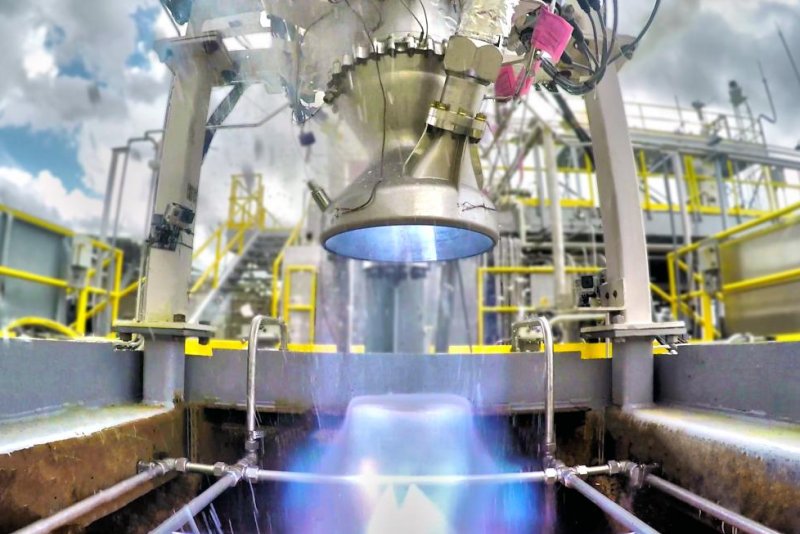1 of 2 | Relativity Space tests its 3-D printed Aeon engine. Photo courtesy of Relativity Space
ORLANDO, Fla., July 23 (UPI) -- On the 50th anniversary of the Apollo 11 moon landing, 3D printing technology is changing the way rockets are made and the way Florida space companies do business.
Significant new space companies or related technology endeavors in central Florida are building entire rockets, rocket fuel and even human tissue using the printers, which spit out different materials in computer-controlled patterns to form solid, three-dimensional objects.
At Cape Canaveral Air Force Station, rocket company Relativity Space is renovating Launch Complex 16 with a goal of this year launching a rocket -- the Terran 1 -- that is 95 percent made of 3D printed parts. Nearby in Cocoa, another company, Rocket Crafters, is printing plastic fuel cores for hybrid rocket engines.
And next to the University of Central Florida in Orlando, 3D printing company nScrypt is working with biotech experts to print a mesh, called scaffolding, that allows human stem cells to grow into various organs and human tissue.
A printer made by nScrypt is traveling to the International Space Station to test the benefits of printing soft tissue in micro-gravity. The company makes printers that can print circuit boards, specialized antennas and various other high-tech items. In the office, it even has a "printer" that spits out a finished pancake.
"People want the replicator from Star Trek that can make your meal," nScrypt founder and CEO Ken Church said. "We're not there yet, but we are going to print your cellphone." The company employs 60 people and sells printers for up to $400,000.
Printing an entire rocket is the goal at Relativity Space, said Chief Technology Officer Jordan Noone. He and several others at the company formerly worked at SpaceX.
"When we started the company three years ago, our vision was to have 3-D-printed rockets on Mars," Noone said. "Having a 3D printer will be essential for a colony on another planet, and we want it to be able to use whatever material is available there. You probably won't have a metallurgist there, but the printer will know how to use whatever metal is found on Mars."
Relativity couldn't find the kind of printers it needed to build rockets, so it designed its own. The largest, called Stargate, takes up a two-story space in a building at the company headquarters in Los Angeles.
"They've done big printers before, but not like this and not with metal," Noone said.
The metal is fed into the printer as a wire. Inside the printer, the metal is melted under high temperature. When it emerges, it cools rapidly, fusing in a strong bond with the rest of the structure.
Noone said the company is allied with SpaceX founder Elon Musk's vision to send people to Mars.
"I think SpaceX will do it, but I think there's a ton of things needed if we're really going to have a Mars civilization," Noone said.
The goal is to get the entire Terran 1 rocket assembly time down to 60 days. Noone said the industry average currently is 18 months to build a rocket. Relativity Space has already test-fired its 3D printed Aeon engine.
Rocket Crafters also is aiming at a test flight for its Intrepid-1 rocket using its branded engine, the Star-3D, by the end of 2019.
Company president Rob Fabian says printing the plastic fuel core of the engine makes it more reliable and smoother burning than other solid fuels.
As a hybrid fuel engine, the company says its engines will be safer and easier to terminate in the event of a problem, as the ignition and burning of the fuel only occurs under very specific conditions.















